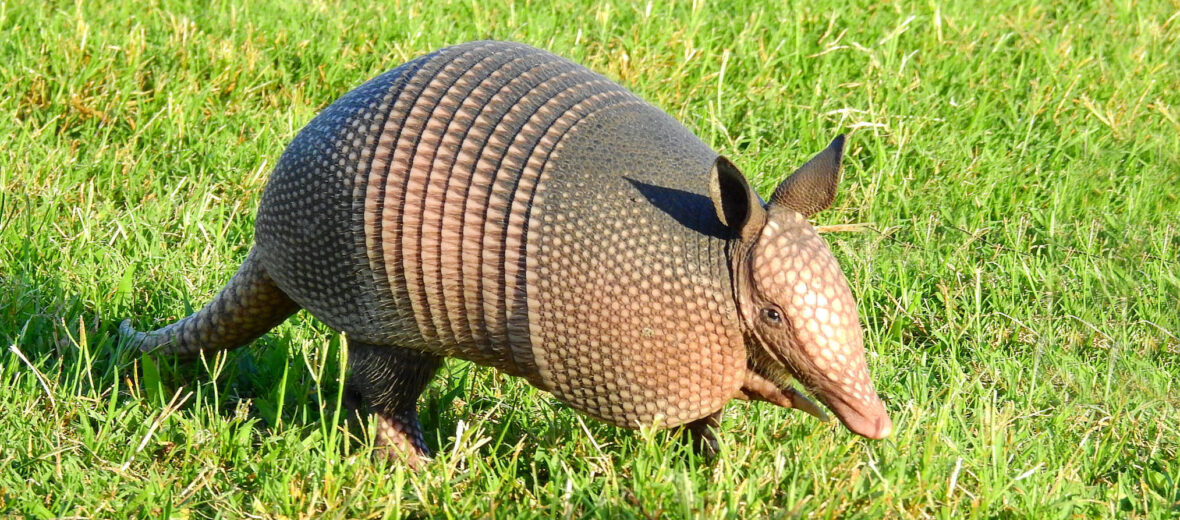
The nine-banded armadillo is a small, barrel-shaped critter covered in a suit of fleshy armor. Its name means “little armored one”, in Spanish. Their body armor provides protection against most would-be predators. Unfortunately, their armor doesn’t protect them against vehicles. They are also sadly known as “Hillbilly Speed Bumps” due to their tendency to get run over by vehicles. They are the only mammal with body armor. These critters can be found throughout the southern parts of the U.S., from Texas to the Atlantic and as far north as Nebraska. It’s also common to see them in Mexico. The nine-banded armadillo is listed as Least Concern by the IUCN.
First the Stats…
Scientific name: Dasypus novemcinctus
Weight: Up to 9.8 lbs.
Length: Up to 23 inches
Lifespan: Up to 15 years
Now on to the Facts!
1.) These unusual critters have been around since the Cenozoic Era, over 3 million years ago.
2.) There are 21 known species of armadillo in the Americas.
3.) The plates of an armadillo are made of solid bone and covered with flesh. They grow right out of their vertebrae.
4.) Only the three-banded armadillo, can roll itself into a hard armored ball to defend itself against potential predators.
5.) Armadillos sleep 16 – 18 hours per day in their burrows.
But wait, there’s more on the armadillo!
6.) If threatened, the nine-banded armadillo will perform a sudden vertical leap 3 – 4 feet into the air then take off running, as fast as its little legs can go.
7.) They feed on ants, termites, worms, grubs, and any other invertebrate they can dig up with their claws. They will also eat carrion, roots, fruit, and even fire ants – using their long sticky tongue.
Did you know…?
An offshoot of the guitar, charangos became popular among the indigenous people of northwestern South America after the arrival of European settlers introduced guitars. For centuries, the resonating chamber of the charango was made from the shell of an armadillo. Nowadays, they are typically made from wood.
8.) Believe it or not, armadillos are great swimmers. They can even hold their breath for up to 6 minutes when they dive.
9.) If they can’t crawl under a fence, they will simply scale over it. Yep, they can climb too.
10.) Along with sloths and anteaters, armadillos have slow metabolisms and subsequently low body temperatures. This makes them particularly susceptible to the bacterium that causes Hansen’s disease (leprosy). Due to this fact, armadillos are typically used in leprosy research.
But wait, there’s still more on the nine-banded armadillo!
11.) Typically, armadillos like sandy or loamy soils that are both loose and porous. This makes digging for food and constructing burrows easier.
12.) The armadillo is crepuscular (active at dawn and dusk).
13.) Females undergo what is known as delayed implantation. They mate in July but the female actually becomes pregnant in October.
14.) After fertilization, the egg divides into 4 genetically identical cells, which go on to produce 4 genetically identical young. No one really knows why this is, but it is presumed that this is to help avoid inbreeding. In addition, the seven-banded armadillo has 8 – 15 identical pups at one time!
Now a Short Nine-Banded Armadillo Video!
Also, check out the Critter Science YouTube channel. Videos added frequently!
Want to suggest a critter for me to write about? Let me know here.



